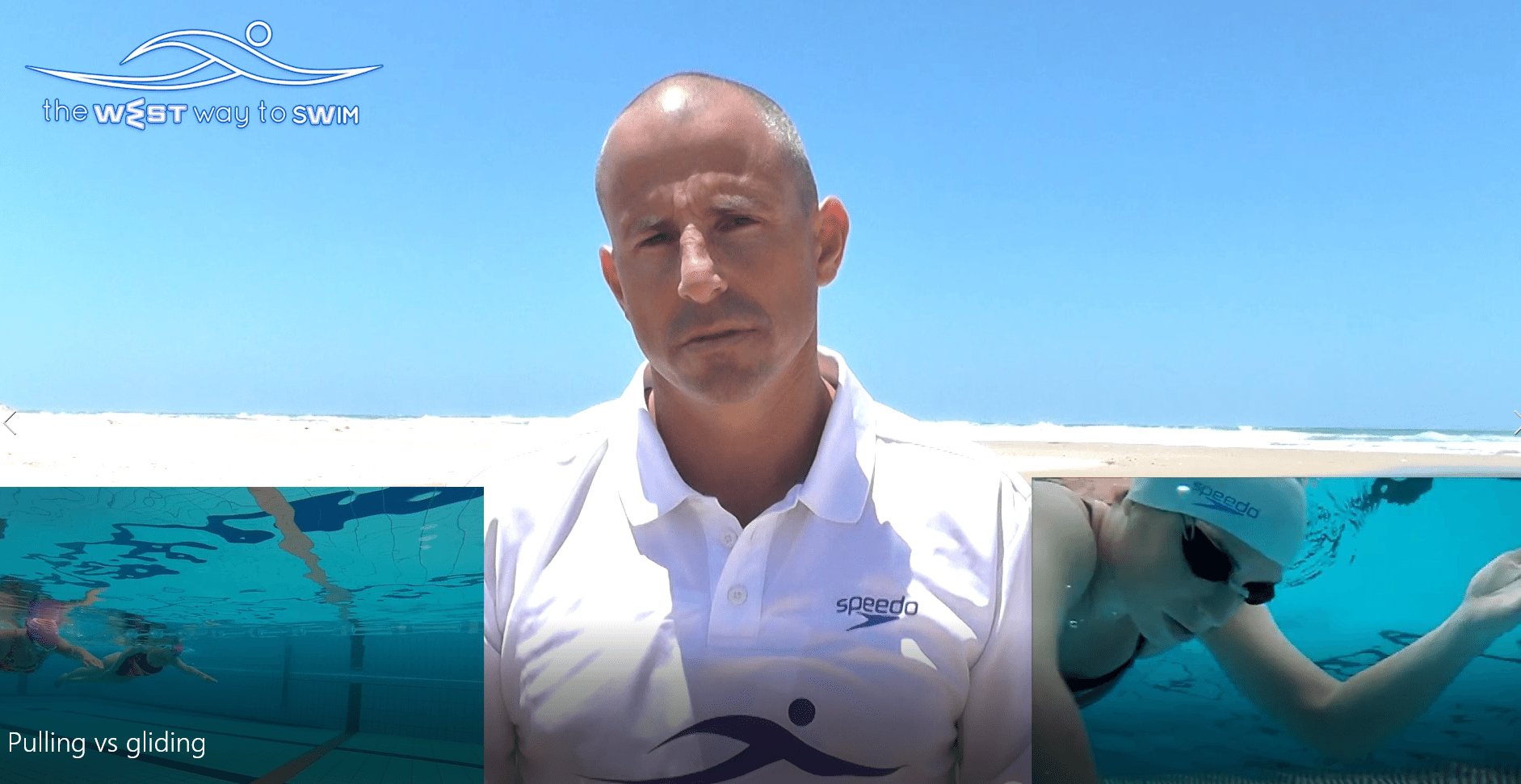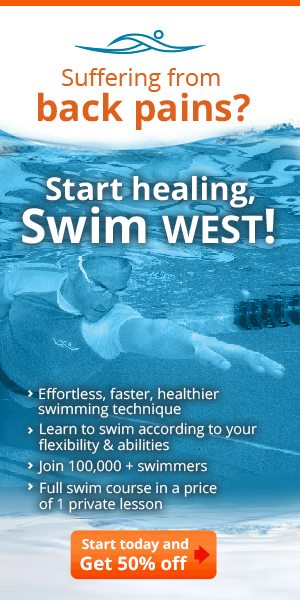Why is your glide so much more important than your stroke?
One of the most common thing I hear from swimmers who come to me is that they were told they must work on their pull to improve their speed.
Our main goal in swimming is to help the body move better through the water, and in WEST swimming technique we also aim to preserve the neck and lower back while working on flexibility and elongating the muscles through a stretch that is tailored exactly to the body type and capabilities of each swimmer.
Taking into account that the body of an Olympic swimmer is different than most people , we say that the pull and catch is one of the least important things to your advancing, and yes, to your speed in the water.
Why is that?
Let’s take for example a swimmer who swims a 25m pool in 30 seconds with 25 strokes, with a 75% effort. If we work with him on improving his pull all those numbers will deteriorate. In 99% of the cases that we worked with adult non-Olympic swimmers, working on the pull caused them to work harder by 20%, reach a higher pulse and swim more slowly! The extra effort leads to shortening of the muscles and ultimately to sinking.
Sure, you can afford to practice a better stroke from time to time, but the most important thing is to work on your flexibility and to stretch your hand at the correct depth for you to make your body float better. Working on your stroke when you swim more than 20 strokes per length and still sink will only shorten your muscles, cause you to sink more and limit your speed.
I will give you a few drills to work on your stroke, but first let’s talk about floating and the new swimming suits we will see in Tokyo 2020. The new suits are meant to create “compression” in the form on taping on the leg muscles. In a stretched state it makes the body float, which enhances the dolphin move immensely and lowers the friction with the water to a great degree.
What does that have to do with our glide, and why is it so important? Our slow glide at the end of the stretch will make the body float just like the suit.
Many times in our lives it is not an outside factor like our spouse or boss that stops us, but ourselves. The same thing goes for swimming. Before we learn how to increase our speed through effort, we must learn how to eliminate everything that stops us in the water, like our legs sinking, a wrong head position that creates stress to the neck, or an inadequate stretch.
When you’ve taken care of all that, you can try this drill, which will elongate your muscles and cause you not to stop yourselves in the water, while teaching you how to “grab” water better:
For 12.5m swim “long doggie paddle” (freestyle without getting your hands out of the water, which is sort of braking) and then another 3.5 laps (up to 100m) regular freestyle with emphasis on a long slow stretch. Repeat 5 times.
Another drill is floating on your back and letting your legs lead, “grabbing” water with your hands about 20cm from your hips and trying to advance. If your legs sink you can use a pull buoy . Do this for 25m, and then another 75m a very long freestyle with counting strokes.
In conclusion:
Like everything in life, you have to find the right balance and prioritize in order to succeed. If you are not Olympic swimmers you can still swim amazingly well, but it is important that your swimming technique match your capabilities and your body type.
So, if you can easily swim less than 18 strokes per length, your heels are at the water line and you float well, you can work on your stroke and “grabbing water”, and it will be effective and make you swim faster, but if not, you’re better off swimming according to your body type and concentrate on stretching according to your WEST, to make you float better and swim faster.
If you still sink watch this video & learn how to float better>>
Start today and get 50% off on your swim WEST freestyle course



